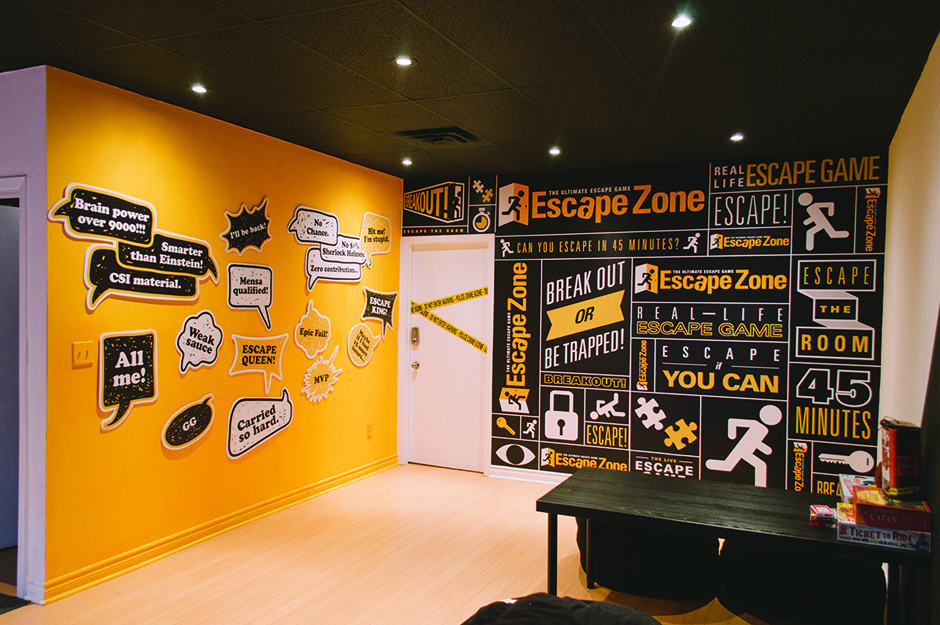In the last few months, many Torontonians have found themselves trapped — locked in poorly lit rooms with a group of friends, desperately trying to find a way out. The strangest part? It’s an experience they paid for.
Interactive puzzle-solving experiences, better known as room escape games, have recently exploded in popularity around the world, and Toronto is no exception.
The real-life room escapes are often said to have evolved from the room escape video games that popped up all over the Internet in the early 2000s. In these games, players would point and click on objects for clues on how to escape their disturbing online locales. It wasn’t long after that entrepreneurs in Japan, China, and California took the core concept behind games like Crimson Room and placed players in similar — albeit real-life — environments. From there, the idea blew up worldwide.
These days, escape rooms come in a multitude of forms. The most traditional ones trap players in a single room with clues spread throughout, awaiting decoding. Others challenge patrons to escape a series of rooms, with each unlocked door leading to a new set of challenges. Regardless of the set up, one element always remains constant — you only have one hour to escape.
Ryan Henson Creighton, an ex-video game designer turned escape room creator and owner of the company “LockQuest” shared a few of his thoughts on the recent explosion of room escape games in Toronto. Apart from cold weather making Torontonians look for indoor activities, Creighton says, “Another reason they’re big here is that Toronto is a multicultural city. We have international students who have played these games at home who can spread the word about them here.”
With such a saturated market, it can be challenging to decide which puzzle to tackle first. Third year student Danny Xie shared his experience with EscapeZone’s Biohazard room. While players are restricted from spilling details of any of the games’ puzzles, Xie commends the room for constantly bombarding his group with challenges and was impressed by the staff’s enthusiasm, saying, “[The employees] offered clues and guided us through some of the tougher puzzles.”
Anthropology student Elora Tse recommends ESC-IT, a venue that proudly boasts the title of first escape room in Toronto. Like so many other players, Tse’s experience in ESC-IT’s “Escape With Vision” room saw her and her team failing to free themselves before the clock hit zero.
I’ll be the first to admit my own session ended with me laying in a pile of fake bones while my teammates desperately scavenged for any remaining and overlooked clues.
For the sake of immersion, Creighton recommends rooms that rely on story. “Too many escape games dump you into a bizarrely decorated room with no compelling reason to escape other than ‘the door’s locked,’” he says, adding, “Cool — how did I get here? Who locked me in?”
“Story, to me, is everything,” Creighton elaborates. “With [escape rooms], I think story is an essential part of the magic,” he says.
Creighton’s own company currently runs a room called “Escape the Book Club Killer.” After responding to a strange invitation to join a peculiar stranger’s book club, players find themselves locked in the mysterious apartment of said book club killer. They are then tasked with unravelling any clues left behind by past victims to escape before the madman returns.
With such an apparent demand for the puzzle games, a major question worth considering is what the future of this pastime might hold. Creighton referred back to his video game days to predict what might lie ahead.
“As with indie games, a few break-out successes will attract the attention of more financially endowed entrants, and games with higher production values will push out lower quality games,” he predicts.
From there, we agreed, it’s possible that the games might take new forms outside of single room mysteries, with companies introducing new types of experiences like outdoor puzzle hunts that won’t always centre around escaping.
Regardless of where the trend goes, it’s clear that escape rooms are in Toronto to stay. They seem to fill a niche market of creative problem-solving that, until now, had been untouched.
As Creighton says, “People enjoy these games, in part, because they’re a departure from reality. The deeper you can immerse people in the experience, the more enjoyable it will be.”




